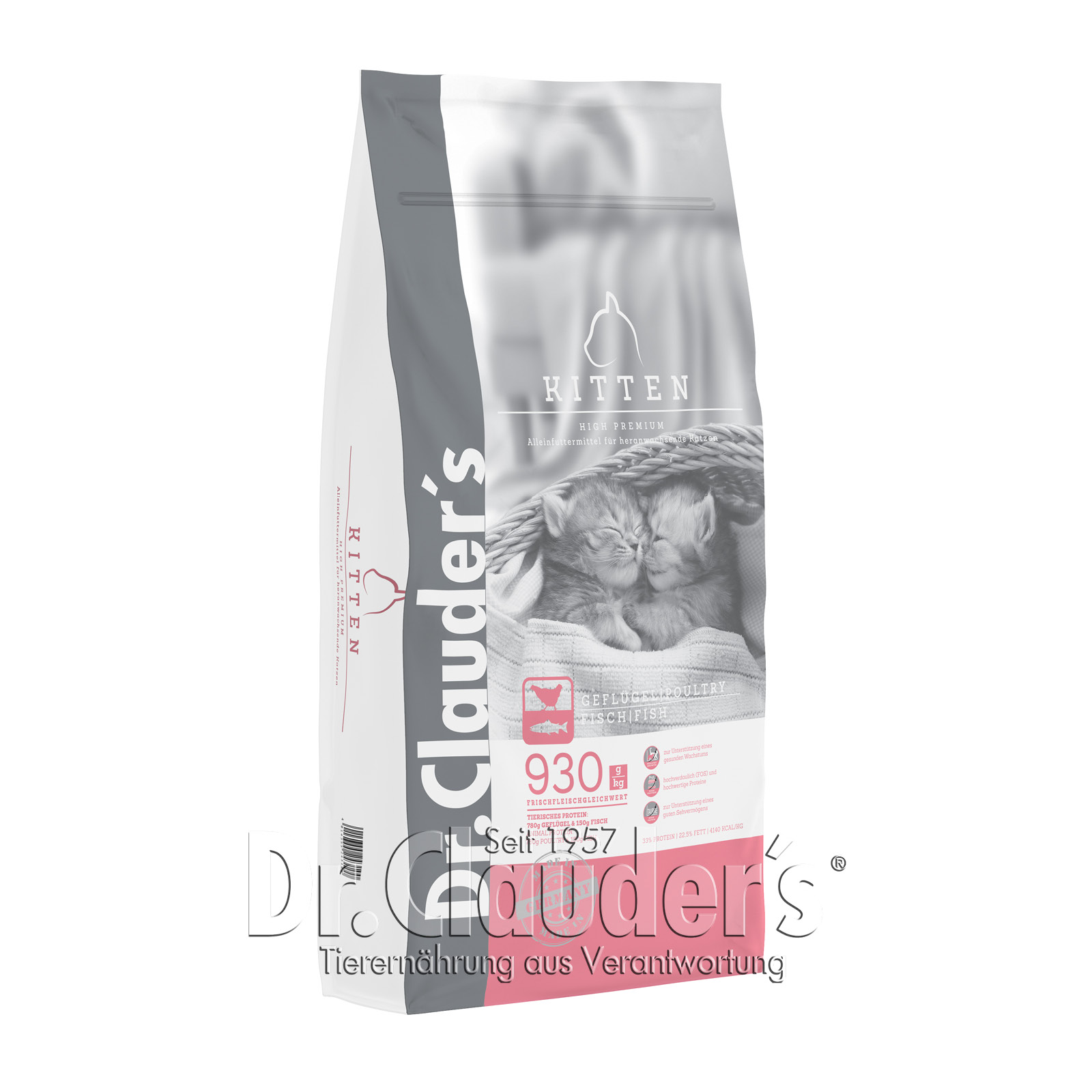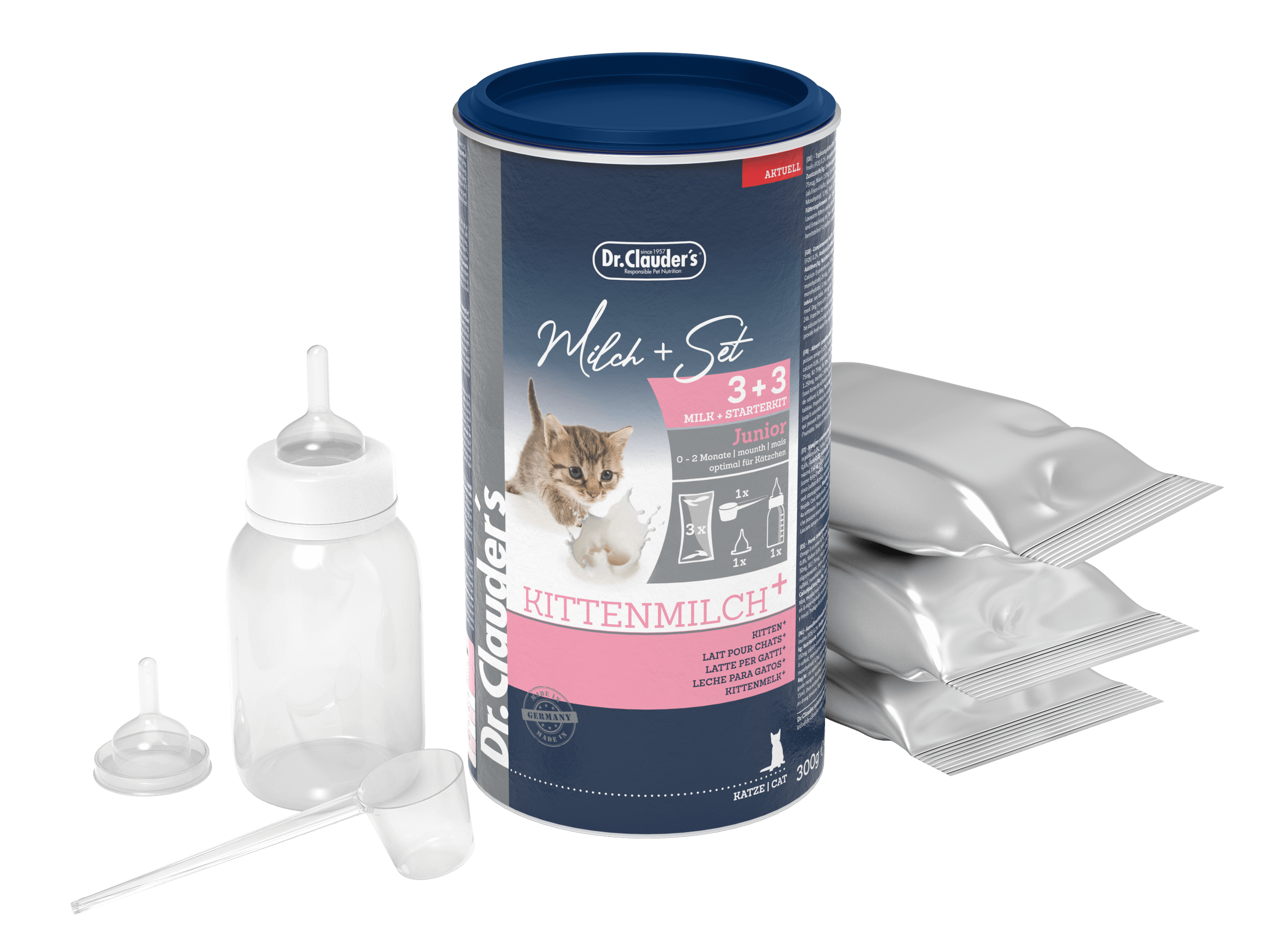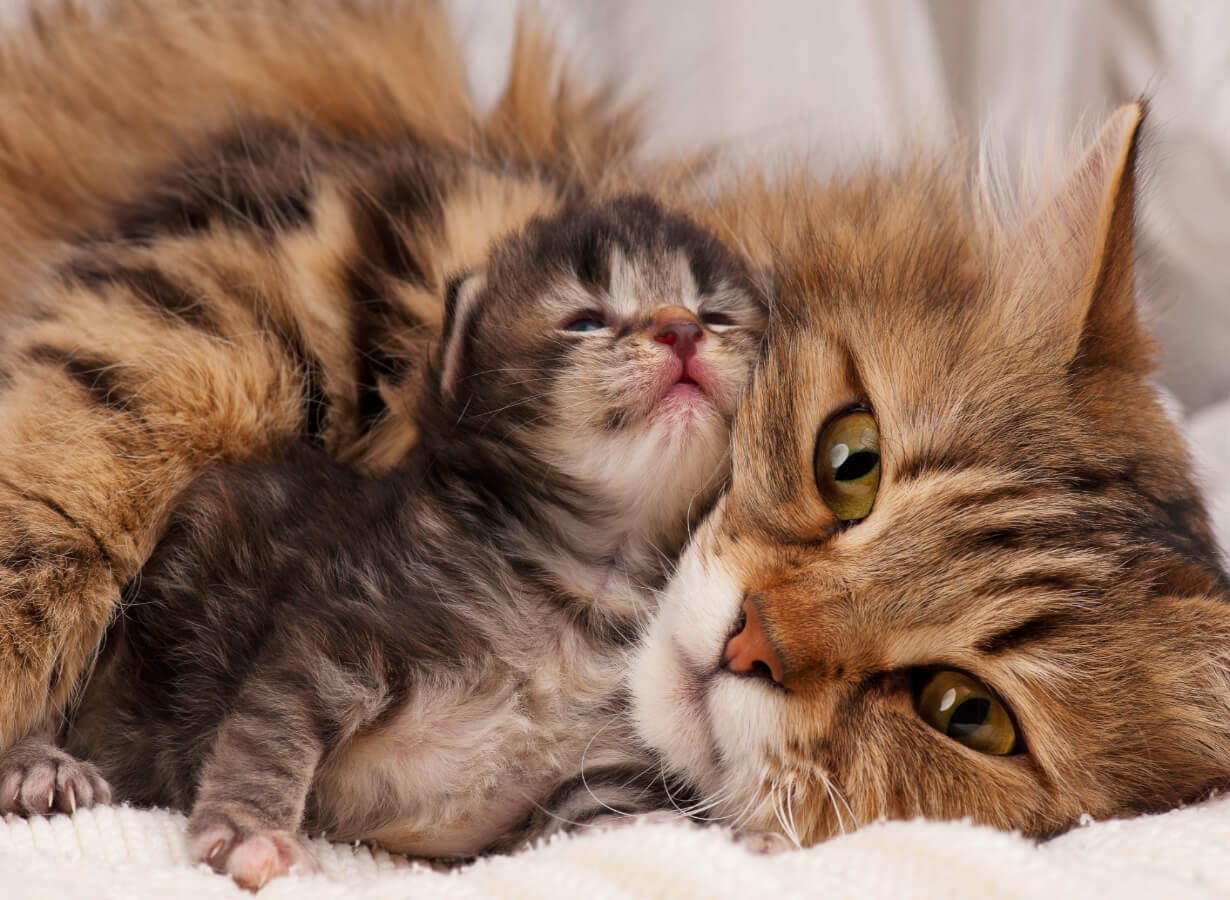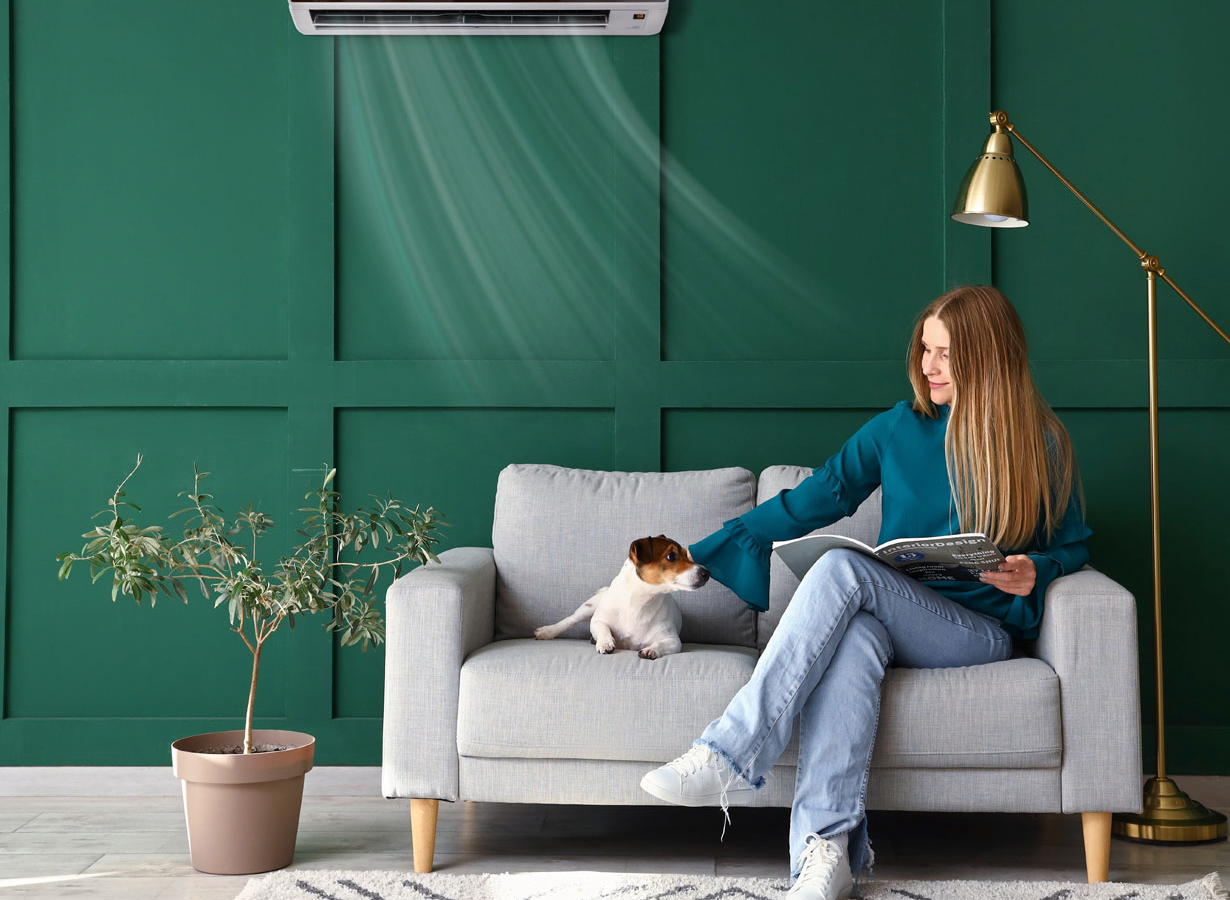Included in this article:
- Birth in cats
- Signs of birth
- How you help
- The first 2 weeks
- Transition phase
- Kitten food
- Socialisation phase
- Bite inhibition in kittens
- Summary
- Product tips
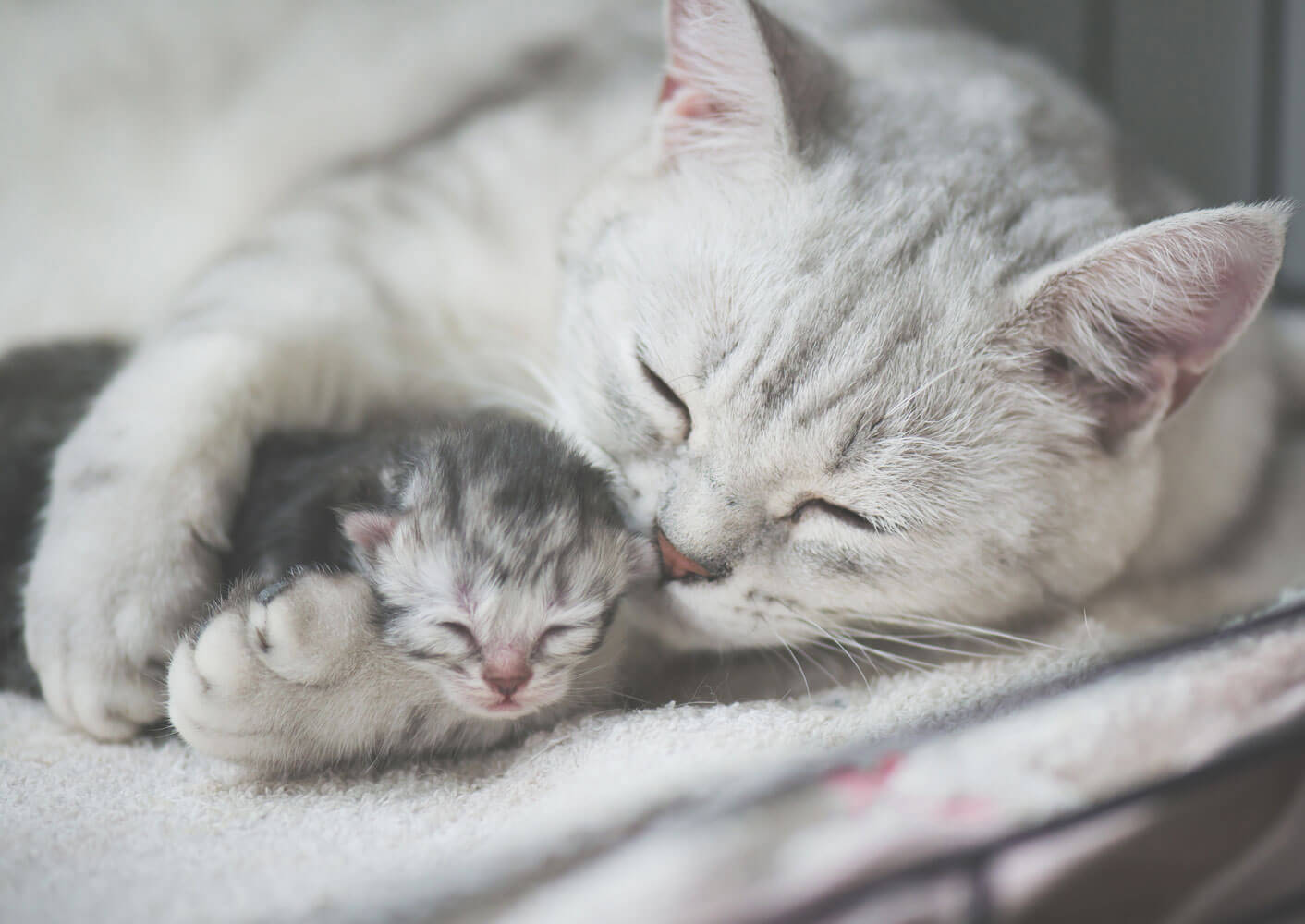
Velvet paws on an exploratory tour: The first weeks in the life of a kitten
Is there anything more adorable than kittens? You just have to love these little fur balls. But it's important not to forget how formative the first weeks of a kitten's life are.
As an owner, it is worthwhile to deal with the topics of pregnancy, birth and dealing with young kittens.
In this article we have compiled a list of things you should bear in mind.
Birth in cats: What you need to know
Normally, the gestation period of a cat lasts 63 to 68 days. To facilitate the birth, you should provide a litter box for the cat in a warm (at least 22°C) and quiet place. Boxes with a removable lid and an entrance hole on the side are best, as cats prefer caves. Thanks to the removable lid, you can keep a close eye on the litter and intervene in an emergency.
Clean cloths are best suited as a base. You should avoid terry cloth towels, as young cats cannot yet retract their claws and could get caught on the fabric loops. Make sure that both cat and kitten are warm and comfortable.
How to tell if your cat is pregnant
If your outdoor cat has a growing belly, it is very likely that she is pregnant. Your vet will be able to confirm this by ultrasound and give you an approximate estimate of how long it will take for the kittens to be born.
By observing carefully , you will be able to tell when the kittens are about to be born even without knowing the day of mating. A cat's belly grows later in the gestation period.
In the third week of pregnancy, the teats start to change, becoming larger and pinker. Furthermore, the cat needs more energy, which is why her appetite increases.
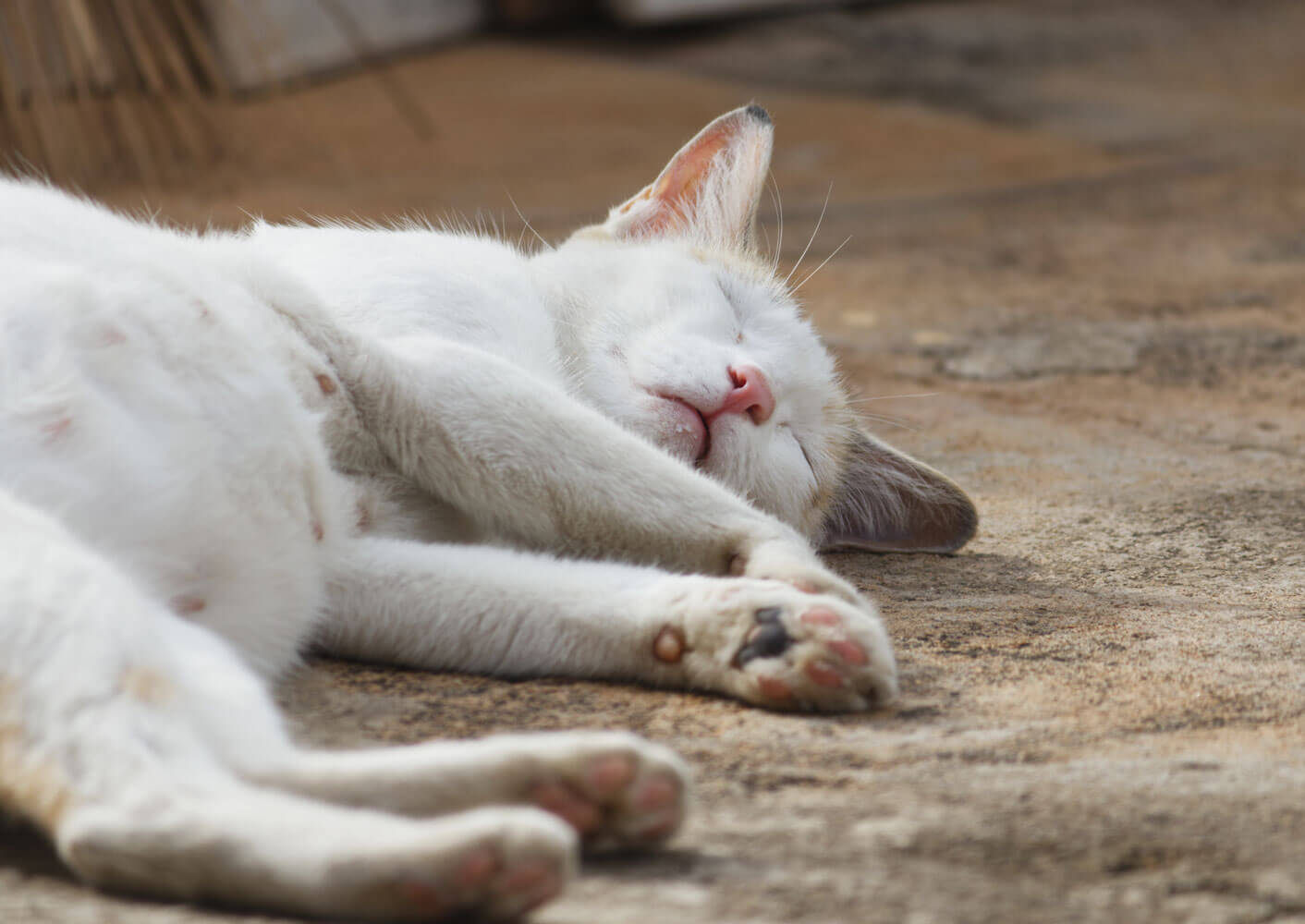
Similar to humans, cats can also suffer from nausea and vomiting, weight gain and mood swings during pregnancy. It is possible that the expectant mother cat may become more affectionate at first, only to pull away from you later. Give her the space she needs.
From the sixth week after mating, the kittens start to move around in the womb. You can see and feel this, especially if it is an average litter of four to seven kittens.
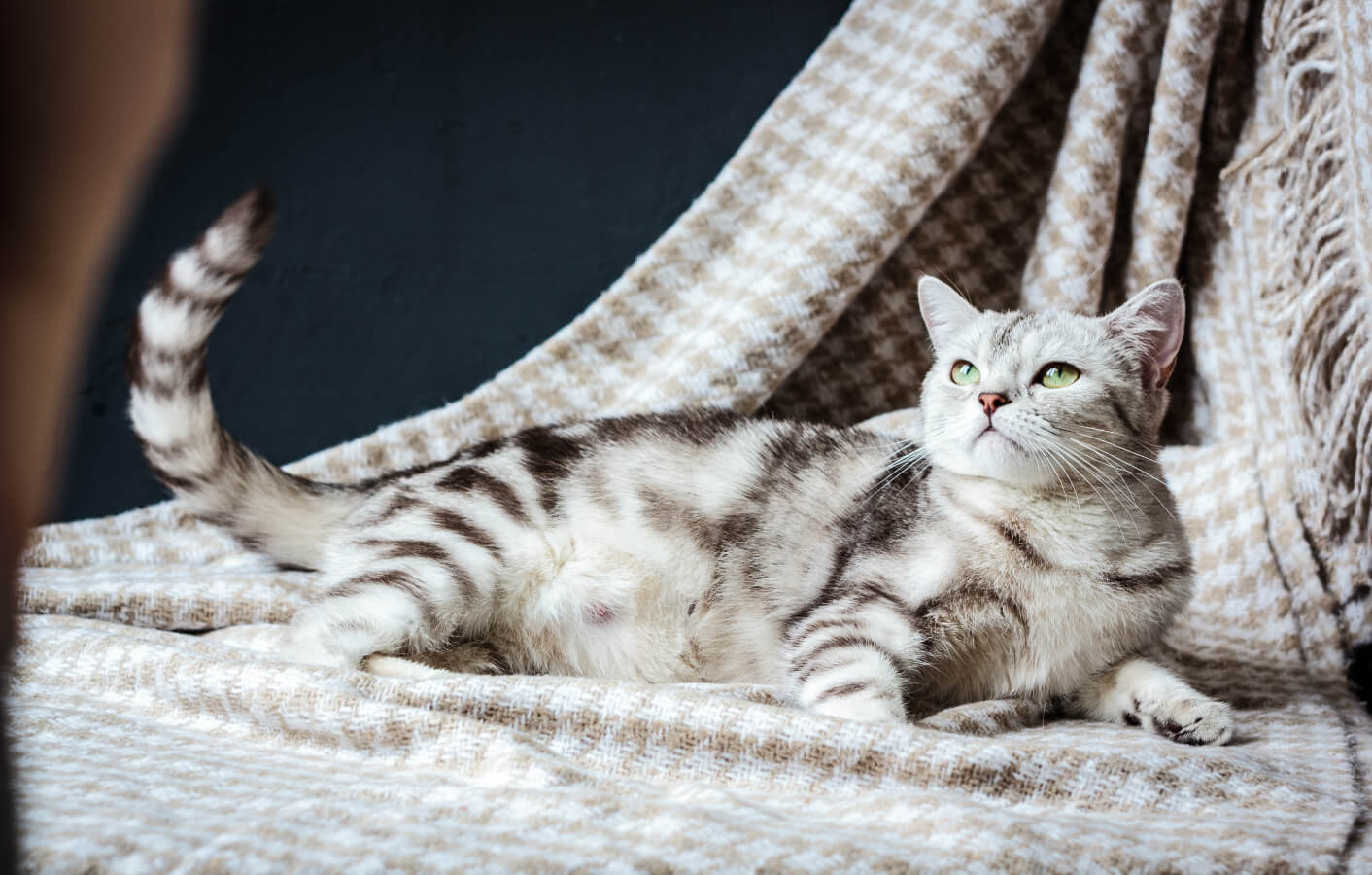
The kittens are coming!
The number of kittens a cat gives birth to varies and depends on different factors, such as the breed. Usually cats have between 3 and 6 kittens per litter, with the first litter usually consisting of 2 to 3 kittens.
Even if your cat can handle the birth on its own, it is important to be prepared towards the end of the gestation period to assist if needed.
Look for the following signs of an impending cat birth:
- Refusal to eat, restlessness and looking for an undisturbed place indicate that labour may begin soon.
- The cat's body temperature drops to about 37.8 °C within the last 12 to 24 hours before birth.
- The mother-to-be may become noisy, appear restless or want to groom herself constantly shortly before birth.
- Before birth, strong lower abdominal contractions occur, accompanied by some vaginal discharge. If this discharge is thick and black or bloody, contact the vet. The kittens should give birth immediately after this discharge.
How can you help your cat?
The mother cat takes care of each newborn kitten by cutting the umbilical cord and licking the little one dry. It is important that the mother cleans the nostrils of the kittens to allow unobstructed breathing.
Caution: If the mother cat is too tired to clean her kittens, you must intervene. Gently massage the kittens against the direction of hair growth, with the kitten's face down.
Hopefully, so far your intervention has not been necessary. As long as everything is going well, you should continue to watch and be calm during the birth of the remaining kittens.

You should intervene and contact the vet in the following situations:
- The cat has been having strong contractions for over an hour but has not yet given birth to kittens. Contractions are indicated by hardening in the abdominal area.
- Despite three to four hours of contractions and birth, no kittens have been born yet.
- Not all kittens were born within 24 hours of the start of the birth process.
- The number of placentas does not correspond to the number of kittens born - this could indicate placentas that have not yet been expelled.
- You see a kitten on the cat's privates, but despite strong pushing it is not fully born.
Unfortunately, sometimes some kittens do not survive birth. In case of a miscarriage at a later stage of pregnancy, a vet should examine your cat to rule out the possibility that an infectious disease is the cause.
See the article "My cat is pregnant" for more information about giving birth to cats.
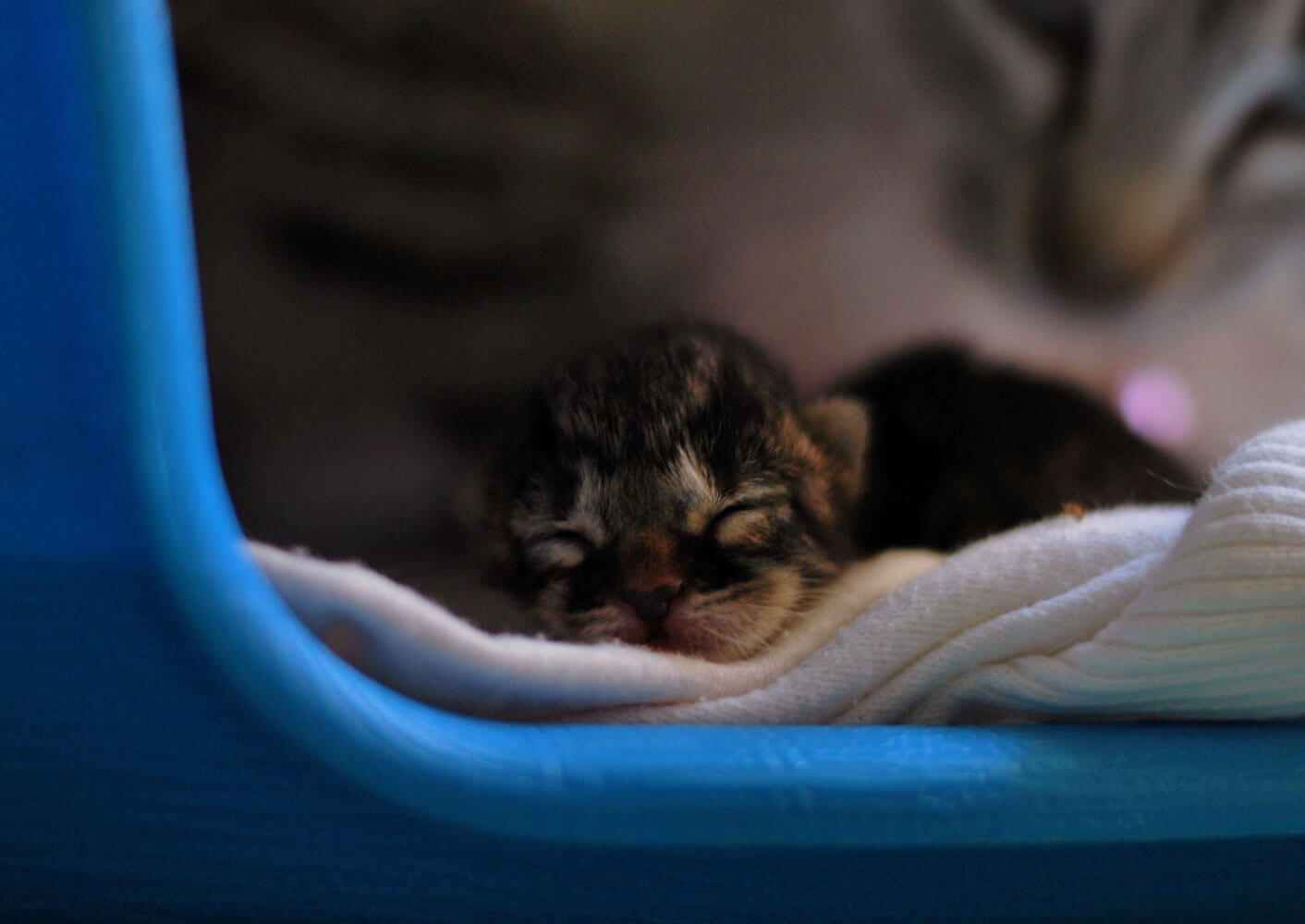
The first 2 weeks
The newborns have a weight of about 100g - their eyes are closed. Since they also cannot hear well yet, they rely entirely on their sense of smell to find their mother's teats. In the first three days, the maternal milk, also known as "first milk", "foremilk" or "colostrum", is somewhat thinner and contains nutrients as well as maternal antibodies that protect the kittens against infections and diseases.
The newborn kittens sleep almost all the time and only wake up to drink or when the mother cleans them. Despite their blindness and deafness, they can perceive smells and react to touch.
During the first week of life, however, kittens are not yet able to urinate and defecate on their own and need the help of their mother, who massages the kitten's tummy with her tongue. They are also not yet able to regulate their body temperature on their own.
If kittens are born at temperatures below 27°C and are not sufficiently warmed by their mother, there is a risk that they will die. Therefore, the warmth of the mother and the environment plays a decisive role in the survival of the young kittens.
In the first days after birth, you should leave the kittens alone and let the mother cat do all the work.
Even if it is difficult: To minimise the risk of infection, you should only touch the kittens with washed hands - if at all - because they have not yet developed strong defences.
In the second week , many kittens begin to open their eyes, while for some it may take until the third week. Once their eyes are open, they become aware of their siblings, mother and the immediate surroundings of the cat's nest. Furthermore, they depend on the nutrients of the mother's milk and the warmth of the mother cat.
To encourage the flow of milk from the mother, the kittens purr and gently massage the teats while sucking by alternately pressing against them with their front paws. This behaviour, called"kicking", can also occur in adult cats when they are stroked, for example.
From the second week onwards, it is advisable to stroke the kittens and talk to them quietly to get them used to contact with humans.
Transition phase: The kittens become mobile
At the age of about 3 weeks, walking already works a little better. Especially curious and self-confident kittens try to climb out of their nest and explore the world already after 3 to 4 weeks.
At 4 weeks they already correct themselves when they stumble or fall down. Their vision is also improving - so they can better find their way around their environment and are a little more independent from their mother.
Important: Put cables and poisonous plants out of reach of the kittens.
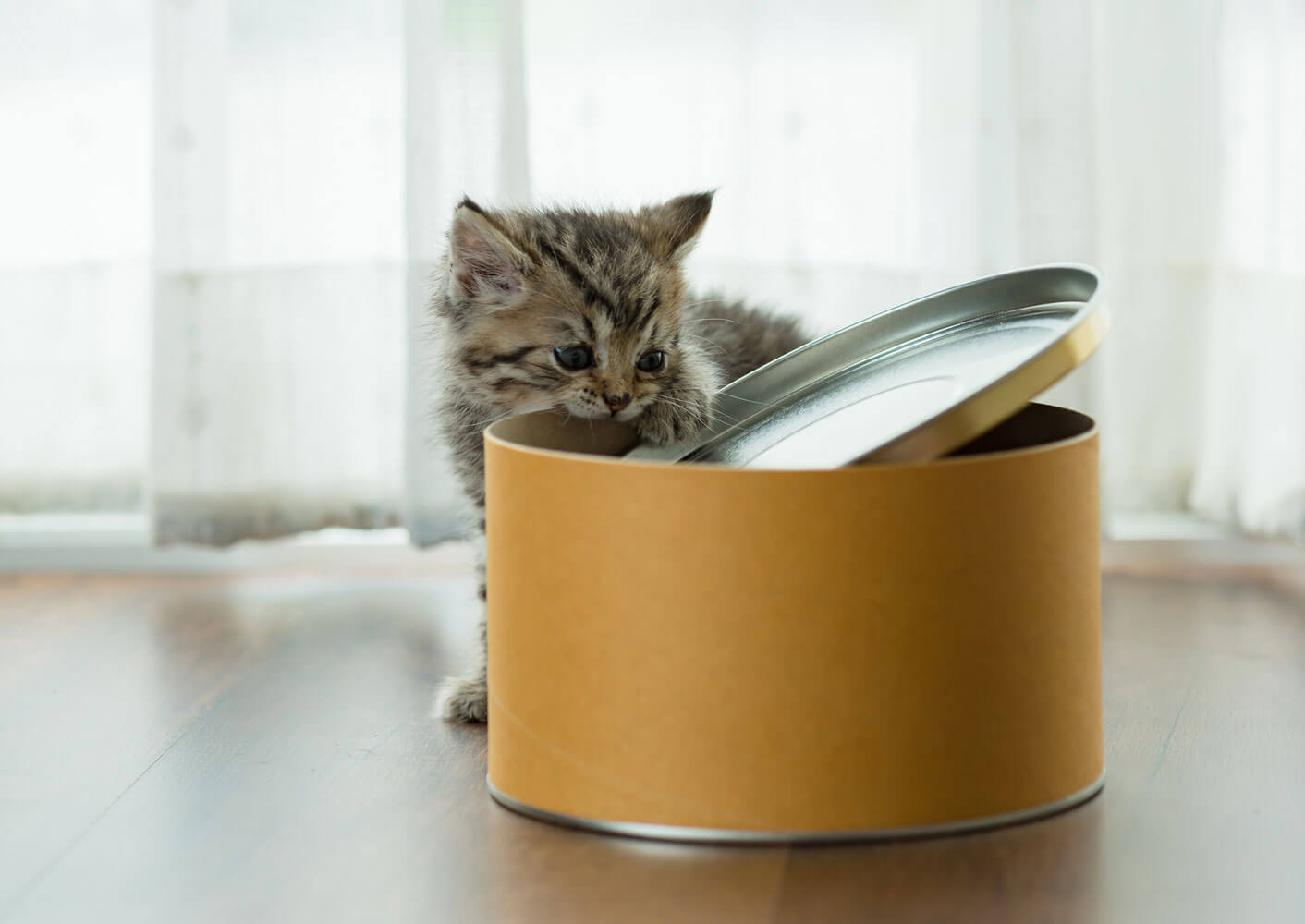
Since worm larvae can be absorbed through the mother's milk , it is recommended to treat both the mother cat and her kittens with a doctor-recommended dewormer from the third week of life.
In addition, it is now time to make acquaintance with the litter box . Caution: The entrance must not be too high and the litter must not be too coarse. By imitation, the kittens will then slowly learn to use the litter tray.
From the 4th week you can start feeding solid food - for example soft wet food. Many kittens already eat dry food after 4-5 weeks and also find their favourite taste.
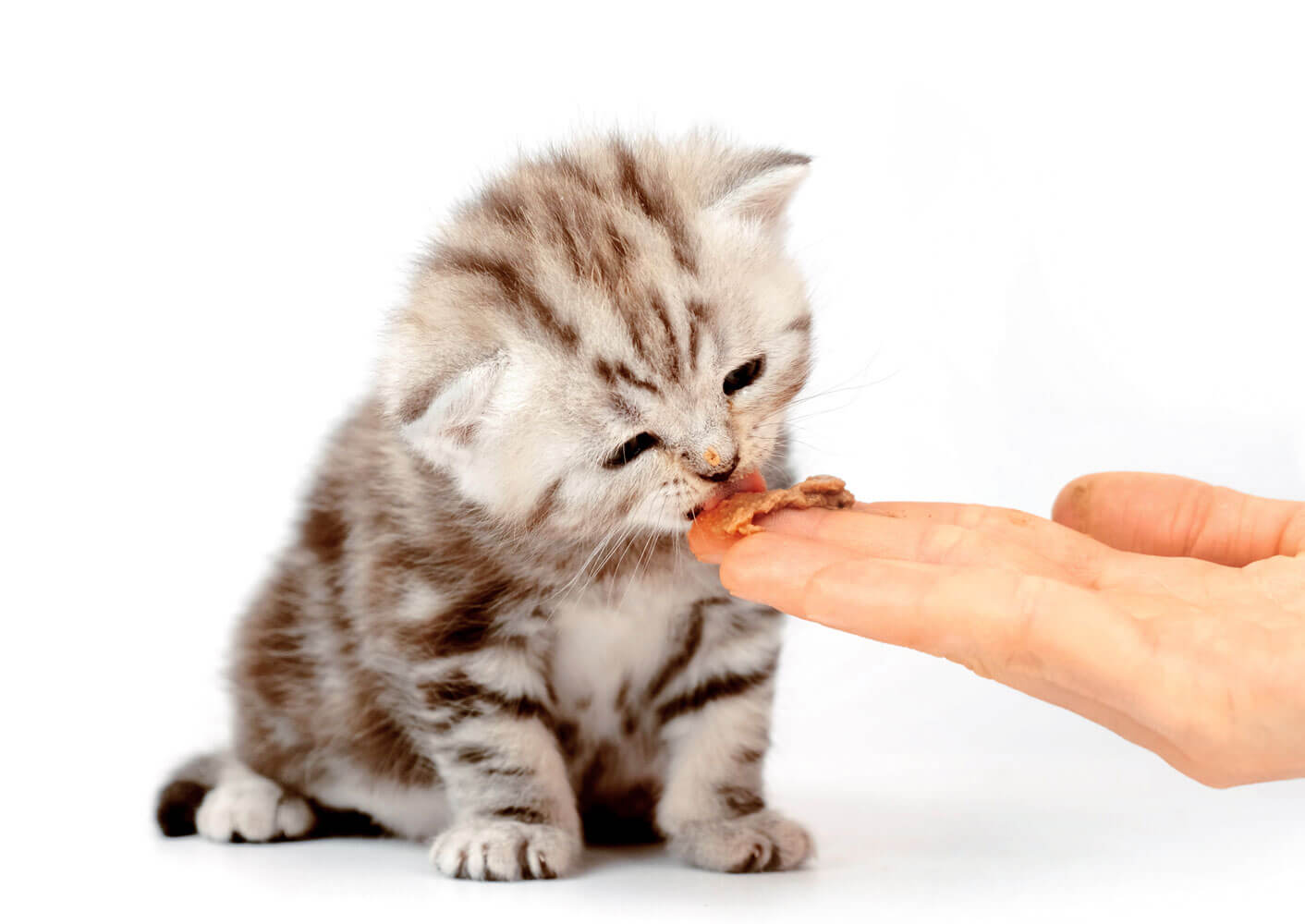
Why are proteins so important for little kittens?
Proteins, also known as proteins, are essential building blocks for life. They play a crucial role in the growth of every cell in the body, including muscles. Skin, hair and muscles are mainly made of protein. Proteins are made up of amino acids.
Of the 20 or so amino acids needed for protein synthesis, 10 are essential for cats to live. This means that these amino acids must be taken in through food , as the body cannot produce them itself.
An insufficient supply of essential amino acids from animal proteins leads to an imbalance in protein synthesis. This impairs vital functions and endangers the health of the animal. High-quality kitten food with a high protein content (about 70%) is therefore extremely important for kittens to grow up healthy.
Socialisation: Out into the big wide world
After the first month, the socialisation phase of the kittens begins.
5th week of life: The kittens begin to groom themselves independently and to play with each other. They curiously take in new impressions and slowly get used to everyday noises. They now have to cover about a third of their nutritional needs with soft kitten food.
6th week of life: In this first socialisation phase, the kittens should gather as many impressions as possible. Get them used to vet checks and allow (supervised) walks on the secured balcony or contact with other animals/humans. The kittens learn that people can be their friends and they can trust them. An exciting time - because the little kittens want to get rid of their energy and not infrequently make a little mess when they romp around.
Week 7 of life: Give the third worming treatment and provide enough secure space for the kittens to play and move around to encourage their coordination, muscle development and healthy growth.
Week 8: The kittens are mostly fully weaned. However, they should not yet be separated from their mother in order to get through the basic immunisations and vaccinations well. Some kittens just need a little longer in their development and they should be given this important time with their mother and siblings.
At three months, kittens discover how to climb, begin to sharpen their claws on scratching posts and jump around the house with energy when they are allowed to. Nerve connections become more stable and muscles continue to form, making their movements more precise.
From the 12th week of life, the young cats can move to a new home and continue to play and be active. They are now at an age where they adapt quickly to change and settle in well with their new family.
My kitten bites - what now?
When playing and romping around, kittens may bite your hands or clothes - you should not put up with this and teach your kitten that a hand is not a toy.
The best way to do this is to stop playing immediately if such an incident occurs. Your kitten will remember that when she bites, the play stops and so does the fun.
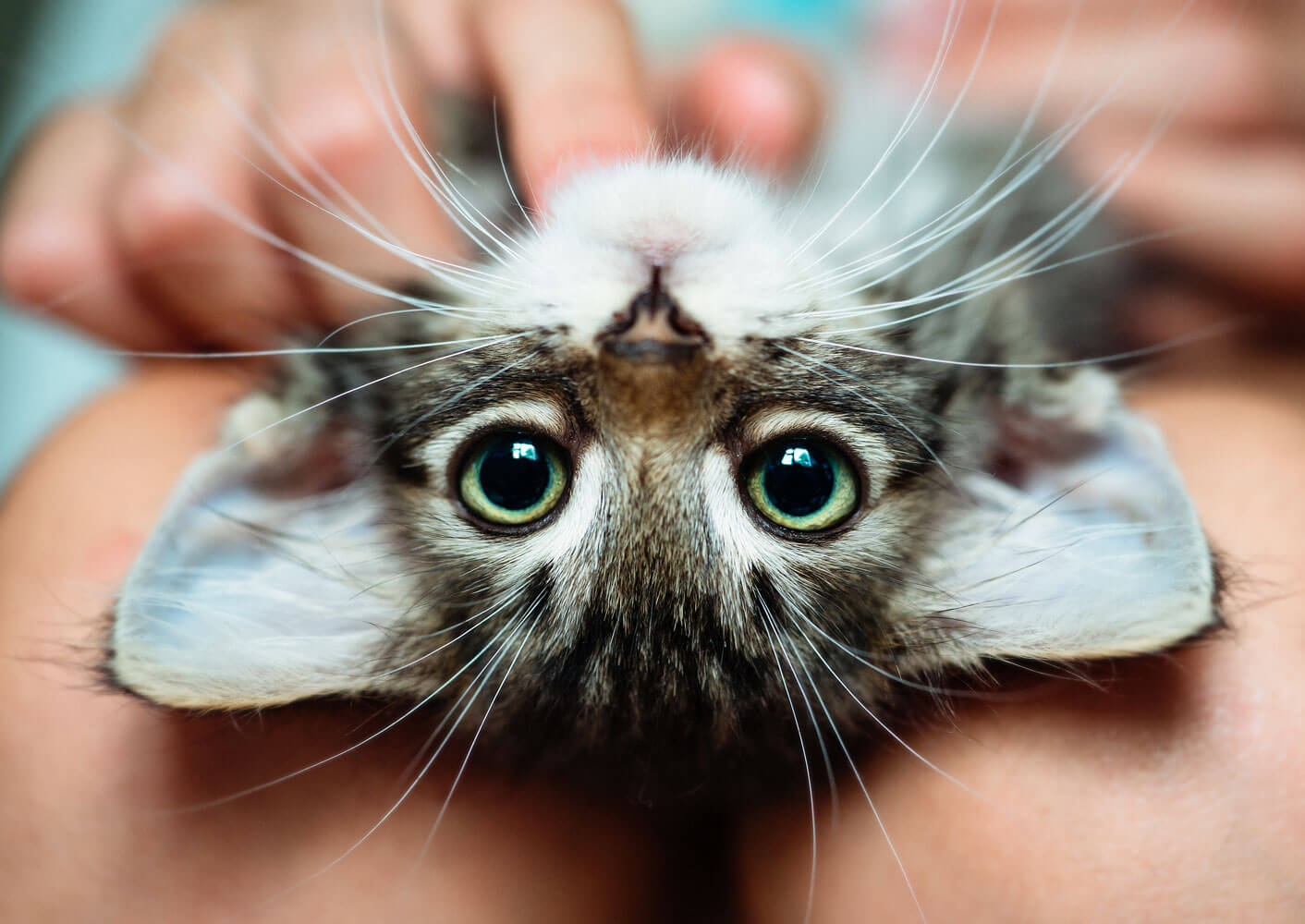
Briefly summarised: The learning phases
1st week: Newborn kittens are blind and deaf, sleep a lot, suck breast milk and need warmth from their mother.
2nd week: The kittens open their eyes, discover their surroundings and continue to need mother's milk and warmth.
3rd week: Now the kittens start to sit up, explore the nest and they need a first deworming.
Week 4: The kittens try their first solid food, explore the environment and learn to use the litter tray.
Week 5: The velvet paws clean themselves, play with each other and get used to everyday noises.
Week 6: From now on, the kittens go through their first socialisation phase, make contact with other people & animals and get used to medical examinations.
Week 7: The kittens receive their third worming treatment, become more active and need more space to play.
8th week: Now the kittens are weaned, but should still stay with their mother and siblings to continue learning and to get through the basic immunisation well.
After 3 months: The little velvet paws climb, sharpen their claws and move to a new home from the 12th week of life.
Dr.Clauder's for healthy cat mums and kittens
The birth and the first weeks of life are exhausting for both the mother cat and the kittens. With Dr.Clauder's products they are well prepared - the cat for suckling and the kittens for the exciting developmental period ahead of them.


